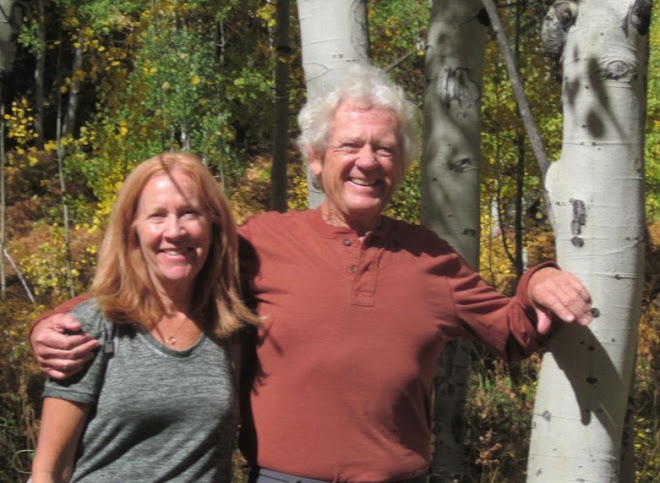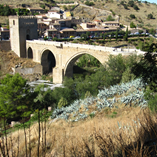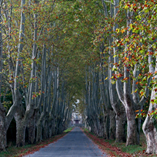We left Tarifa, Spain by ferry to Tangiers, Morocco traveling across the Straits of Gibraltar - about 9 miles at the narrowest point. We were very excited since this is our first time in Africa, albeit North Africa. It is an Islamic country (90%) and our first venture into a Muslim country. Arabic is spoken with French as the second language since it used to be French Morocco. Morocco has borders on the Mediterranean Sea, the Atlantic Ocean, and the Sahara Desert. The country has a vast plain region and is highly agricultural. The plains are by the Atlas Mountains, which go up to 12,000’ (and even have skiing in the winter). On the other side of the Atlas Mountains is the Sahara Desert. The famous Barbary Coast is here and named after the Berbers, semi-nomadic peoples and natives of Morocco from 4,000 years ago.
We did not realize at the time that we were travelling to an Islam country during one of the major holidays of the year, Eid al-Adha, or “Eid.” We think this circumstance certainly changed our experience, uniquely better for the most part. Similar to our Christmas festivities, there was a lot of travel home to be with family and a lot of shopping in preparation for the holiday. The shops were closed during their 3-day celebration. The ferry was jam packed with holiday travelers. Once in Tangiers and through customs, we exchanged money for some dirhams, no longer a Euro currency country. Our first impressions were that the countryside was dry and brown and there was a lot of poverty from the looks of their homes and villages. They have poor roads and 40 year-old vehicles are common. Their fields had dozens of women out in them working. The men were mostly in the cafes, but no women. There were frequent police checkpoints along the road and they indicated whom they wanted to pull over to check documentation. Thankfully, we were not stopped. Litter was dumped all along the roadsides, yet the fields looked clean. Many vehicles were motorcycles with multi-riders or with a trailer, so they can carry either passengers or sheep! Donkeys were a common mode of transportation, carrying freight, pulling carts, or carrying a rider. Donkeys were heavily used both in the rural areas and in the cities.
Cities we visited have a long history compared to our standard in the USA. The Old Town of Fes (not the English spelling Fez, which is a man’s hat) is an extensive labyrinth of small narrow paths with multi-story buildings on both sides. Very easy to get lost there. Fes was built in 808, is a former Imperial City, is extremely conservative, and is the religious center of the country with 700 mosques. “New” Fes was built in the 14th century. Marrakech (Marrakesh) was founded in 1062 and the walls were constructed in 1122. Marrakech was the favorite city we visited and that we would recommend. It is also the primary tourist destination in Morocco. It felt much more open than the other cities we visited. Rabat, the capital city, was built in the 12th century. Every town has many mosques. Casablanca was founded in the 7th century BC by the Berbers. With a population of 5-7 million it is the largest city in Morocco and the 4th largest city in Africa. It is more westernized, modernized, and the financial heart of the country. There we saw wealthy homes on the Atlantic. It has a very busy seaport and international airport and this is where FDR & Churchill met for summits in WWII.
The celebration of Eid lasts for an entire week (even though 3 days is the literal holiday.) 24,000 Muslims travel to Mecca for this holiday on busses. We learned that, primarily, the celebration involves dressing in your best clothes and going to the mosque and then spending time with family. In preparation for this, each family obtains a sheep, then slaughters it (or has a butcher come over to do that) in honor of Father Abraham’s sacrifice. In the Bible, Abraham’s sons are Isaac and Ishmael. The Bible describes Abraham going to sacrifice Isaac as a test of his faith, God stopping him, and instead Abraham sacrificed a goat. The Koran says Abraham was going to sacrifice his first son, Ishmael, and when God spared him, they sacrificed a sheep. [We are fascinated by the difference in these two versions.] Both sons were blessed by God and they split into Jews and Muslims, and they both claim Abraham as their father and Canaan as their promised land.
Muslims during Eid sacrifice an animal and distribute its meat by dividing the lamb into thirds: 1/3 for the family, 1/3 for the poor, and 1/3 to give away to friends, even if they are wealthy friends. It cannot be sold but must be given. A sheep costs between 200-400 euro so is no small investment. We saw sheep being bought and transported home in every possible way: on car roofs, on motorcycles and/or in trailers behind, cars, or even walking them (dragging them is more like it.) After the holiday, we saw carts of sheep’s skin with blood stains on the insides, and we saw fires with the sheep’s heads being roasted and smelled the hair being burned. No part of the animal is wasted.
The marketplaces are called souks. Every town has one major area for the souk. Hawkers were everywhere but not intrusive. Everything imaginable was being sold – live chickens (will slaughter for you), camel meat, fish, eggs, fresh fruits and vegetables, all kinds of spices, oriental rugs, ceramics, lampshades, handbags, shoes, clothing, scarves, head-coverings and Kaftans for women (no hood) and jalavahs for men (with hood.) The best marketplace was the large Jamaa el Fna square in Marrakech. The square is the nerve center where jugglers, musicians, snake charmers, monkey grinders, and shops and merchants of all kinds are present. You must bargain when shopping, offering half to start, so you must leave your sensitivity and meekness at home.
Berbers make up 40% of the Moroccan population. We passed through Berber village after village - poverty, filth, trash, donkeys, markets, sheep, and we finally saw a few camels. The Berber women have tattoos on their faces although the younger population does not always do this. Berber carpets are the traditional hand-woven carpets made by the Berbers, which uses a distinctive knot and has designs that are similar to oriental rugs.
Sights: We saw flock after flock of sheep, most all having a shepherd with them as they do not have fences. Some flocks were making their way to the street and the traffic. We saw orange groves, date trees, cedar trees, and goats. There are many palm trees here, and the coveted Argan trees produce an oil they are very proud of (squeezed from almonds), both for cooking and for hair and skin. We did not see many flowers except along the roadsides in Marrakesh. Other than mosques, palaces, oases, and Kasbahs (fortresses), we saw very little landscaping. All over the country we saw filth, garbage, poverty, disrepair, and decay. There was seldom a bathroom where everything worked properly, including the “modern” bathrooms with western-style toilets! They simply have different standards than Europe or USA regarding cleanliness and sanitation. As we experienced in China, one cannot drink the water even when brushing teeth. We were advised to wear closed shoes as it is so dirty, including donkey dung.
Smells: Right when we disembarked off the ferry, we noticed the strong smells of Morocco. They were unidentified smells, including spices, curry/saffron, fresh mint, cooking smells, cigarettes, leather processing, as well as the abundant donkeys. Of course, we also experienced the smell of the burning hair and flesh of sheep heads the day after the holiday.
Sounds: The most common sound we heard was the Arabic chant of the Adhan over loudspeakers by the muezzins calling the people to prayer five times/day throughout the town. People grab prayer rugs wherever they are and begin their prayers or run to the nearest mosque. Chatter and noise of traders in the shops and their invitations and encouragement to bring in new customers was constant in the marketplaces. The crowded city walkways were very noisy, and we were not accustomed to traffic sounds with quite so many motorcycles and donkeys. One word that we heard shouted out often was “Bellek, Bellek”. Loosely translated it means “Move, Get out of the way, now!” Leaping for the side of a narrow street, into a shop, or doorway (if you are lucky), you will be barely missed by a fully loaded donkey, or a man and cart, making their way to deliver items to shops. Apparently, they have the right of way.
Cuisine: Traditional couscous has the sheep’s head included in it but thankfully, ours had chicken as a substitute. Tangine is their stew to eaten by scooping it up with bread and by hand (right hand only!) We had a delicious one with chicken simmered in spices. Saffron is an important agricultural export. Interestingly, vineyards and wines are produced and sold even though it is against the Muslim religion. Moroccan spices are sparingly applied even though the Arabs started the spice trading market. Very sweet mint tea made from fresh mint is commonly offered as a greeting and a welcome of friendship to visitors.
Architecture: The Moroccan mosques and palaces have exquisite mosaic tile decorations on every surface. The wealthier houses followed the Andalusian model from Spain and have perfect symmetry around a central fountain, with a series of courtyards, riads (patios) pavilions & apartments. Labyrinth designs are used in towns and palaces (wealthy homes) intended to keep away any potential attacker. Their homes are plain vanilla on the outside; all their designs and beauty are saved for the interior. Interior courtyards are very important to them, instead of a back yard or front yard which they see as a waste. No building may be taller than the central Mosque.
Morocco is proud and pleased to be the first country to recognize the USA after their independence in 1776. People were extremely friendly and ready to return a smile and a wave. While it wasn’t common, we were surprised to hear English spoken at all. They claim to have a progressive democracy and are interested in social reforms. We were told that women are no longer required to cover their faces and heads, for example, yet in reality we saw very few without head coverings. There were reforms established in 2004 such as no longer being allowed to have 4 wives – now only 2, but only if the first wife gives her permission to take a second!
Morocco is certainly a vastly different culture from America/Europe. We were amazed by the stark contrasts we witnessed. There was so much beauty with their tiled mosaics, their colorful rugs, their friendly smiles, and the placid countryside. But there was also the busy city streets, different styles of dress and transportation, the apparent deep poverty, and lower level of cleanliness. We enjoyed being exposed to a culture so outside our comfort zone, in its society, food, religion, and roots in antiquity. The sights, sounds & smells of Morocco will stay with us forever.
































































